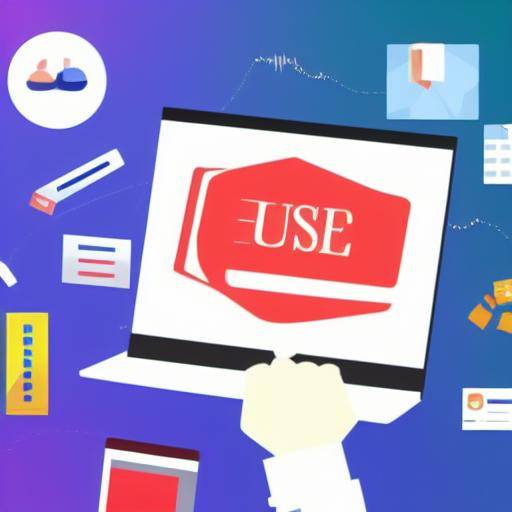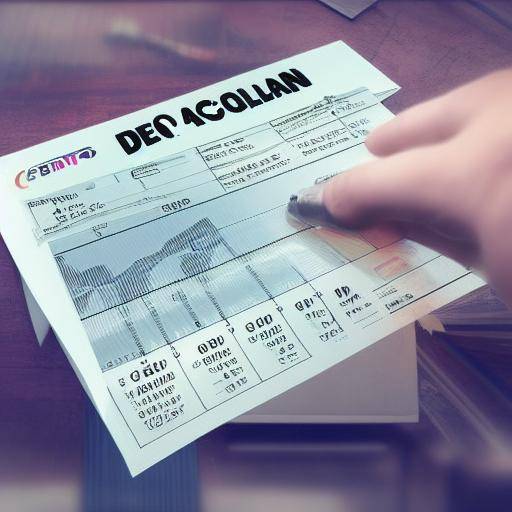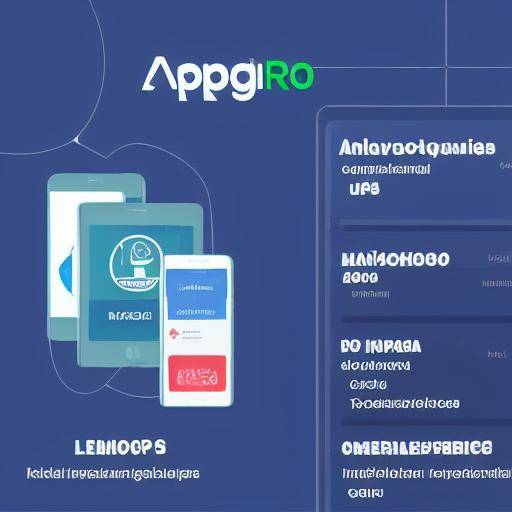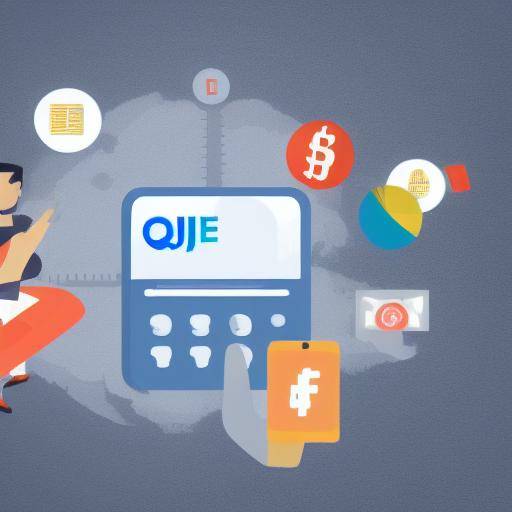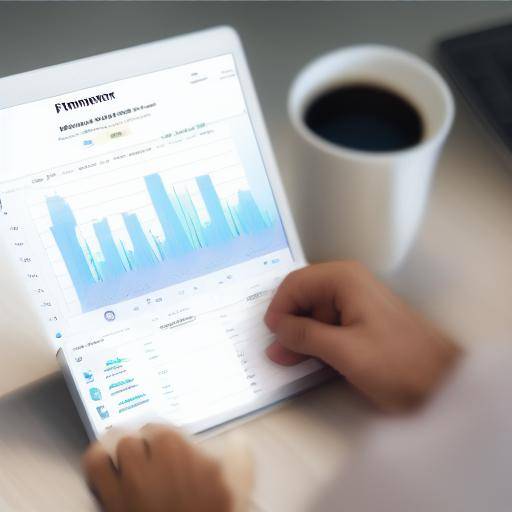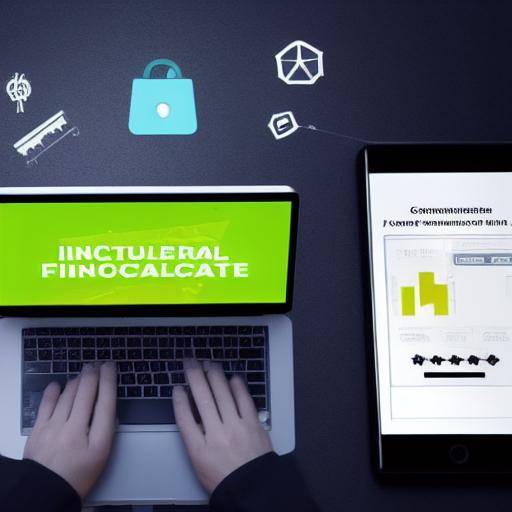
Debt management is one of the most common concerns in people's financial lives. However, thanks to digital tools, the process of creating and maintaining a debt payment plan has become much easier and more efficient. In this article, we will explore the various applications of technology in debt management, how the proper organization can facilitate the process and efficiency that can be achieved with the use of digital tools. From the history and evolution of these technologies to their practical application today, we will provide detailed analysis and practical advice to help any individual manage their debts effectively.
Introduction
In the current digital world, technological tools have revolutionized the way people manage their personal finances. Debt management is not the exception, and with the advent of specialized applications and software, it has become easier for people to create and maintain a debt payment plan. Since tracking arrears to multi-debt management, technology has significantly simplified this process. In addition, organization and efficiency are key elements for success in debt management, and digital tools offer numerous options for achieving these goals effectively.
History and Background
Debt management has evolved significantly over time, as have the technological tools used for this purpose. Since the introduction of the first electronic calculation sheets to current financial management applications, technology has played a crucial role in simplifying and optimizing the debt-payment process.
The introduction of specialized software has marked a before and after in debt management, allowing users to fully visualize their financial situation, establish payment goals and receive notifications to keep up with their financial obligations. In addition, the evolution of information security and protection systems has given users greater confidence in using digital tools to manage their financial data safely and safely.
The role of technology in debt management
- Introduction of the first digital tools for financial management.
- Evolution of specialized applications and software.
- Impact of security and data protection on the development of technological tools for debt management.
Detailed Analysis
Digital debt management tools offer a wide range of benefits, ranging from accurate tracking of payments to identifying savings opportunities and creating effective payment strategies. However, there are also challenges associated with the use of these tools, such as the need to maintain the confidentiality of financial information and the possibility of over-reliance on technology. It is essential to analyze in detail both the benefits and the challenges, to make informed decisions about the use of digital tools in debt management.
Benefits and Challenges of Digital Debt Management Tools
- Benefits: Accurate monitoring of payments, identification of savings opportunities, creation of effective payment strategies.
- Challenges: Confidentiality of financial information, excessive dependence on technology.
Comprehensive review
The practical application of digital debt management tools is essential to understanding their effectiveness and usefulness in everyday life. Through the analysis of specific cases, as well as the best practices and opinions of experts, a clear view can be obtained on how these tools can positively impact the financial situation of any individual.
Practical applications and best practices in the use of digital tools for debt management
- Specific cases: Specific examples of individuals who have succeeded in managing debt using digital tools.
- Expert reviews: Perspectives of professionals in finance on the effectiveness and usefulness of digital tools.
Comparative analysis
Compare the different digital tools available for debt management can be enlightening for those seeking the solution most suited to their financial needs. When examining the similarities, differences and possible synergies between these tools, you can identify the option that best suits each particular situation.
Comparison of digital tools for debt management
- Similarities: Common features and features between different tools.
- Differences: Distinctive aspects that make a tool uncover over others.
- Possible synergies: Ways in which some tools can complement each other for more effective debt management.
Practical Tips and Recommendations
Based on experience and expertise, providing practical advice and recommendations can be crucial for those seeking to improve their financial situation through digital tools. These practical advices may include detailed steps, step-by-step guides and detailed explanations that facilitate the effective implementation of such recommendations.
Practical tips for maximizing the use of digital tools in debt management
- Detailed steps: Specific instructions on how to use a particular tool.
- Step by step: Detailed procedures for carrying out specific debt management tasks.
- Detailed explanations: Additional details that help to understand the logic behind certain recommendations.
Industry Perspectives and Expert Reviews
Getting industry perspectives and expert opinions on digital debt management tools can provide a unique insight into the future of these technologies. In analyzing the trends and forecasts provided by experts, you can better understand the role that these tools will play in the future financial landscape.
Industry perspectives and expert opinions on digital tools for debt management
- Future implications: Analysis of future implications of the use of digital tools in debt management.
- Interviews or expert appointments: Direct opinion of financial professionals on the impact and usefulness of these tools.
- Trend and forecast analysis: Detailed review of current trends and future forecasts related to digital debt management tools.
Case Studies and Practical Applications
Real case studies that demonstrate the practical application of digital tools in debt management can be invaluable for those seeking inspiration and guidance. By analysing the results and lessons learned in different contexts and industries, a deeper understanding of how these tools can positively impact the financial situation of people can be obtained.
Real case studies and practical applications of digital tools in debt management
- Results and lessons learned: Detailed analysis of results obtained and lessons learned in specific cases.
- Examples of different industries or contexts: Practical applications of these tools in a variety of environments and situations.
Future Trends and Predictions
Exploring emerging trends related to debt management and digital tools can provide valuable information on the future of these technologies. In examining predictions based on current data and expert opinions, a clear view can be obtained on the way these tools could take in the future and the opportunities and challenges that might arise.
Future trends and predictions on the use of digital tools in debt management
- Current data-based predictions: Analysis of current trends and possible future developments.
- Future opportunities and challenges: Exploring opportunities and challenges that could arise in the use of digital tools for debt management in the future.
Conclusions and FAQs (FAQs)
After exploring in detail the application of technology, organization and efficiency in debt management through digital tools, it is important to summarize and consolidate the knowledge acquired. Through a comprehensive and detailed conclusion, the value of the information provided will be strengthened, while clear guidance will be provided on the following steps that readers could take. In addition, frequent questions (FAQs) will be included to address common queries that readers might have on the subject.
Conclusion
In short, digital tools offer a wide range of opportunities to improve debt management, from specialized applications to integrated financial management systems. The combination of technology, organization and efficiency can revolutionize the way people manage their debts and take control of their financial situation. By harnessing the capabilities of these tools, individuals can establish effective payment plans, optimize their budget and achieve the desired financial stability.
Frequently asked questions (FAQs)
1. What are the main digital tools to manage debts?
- Answer: There are several popular digital tools, such as Mint, YNAB, EveryDollar and Debt Payoff Planner, which offer specific features for debt management.
2. What aspects should I consider when selecting a digital tool for debt management?
- Answer: When choosing a digital tool, it is important to consider the user interface, the specific features for debt management, data security and integration with other financial platforms.
3. How can I maintain the organization by using digital tools for debt management?
- Answer: It is essential to establish clear categories for expenses and payments, set specific payment targets and keep track of progress regularly through the chosen digital tool.
4. What is the long-term impact of using digital tools on debt management?
- Answer: Effective use of digital tools can lead to significant debt reduction, increased understanding of financial habits and improved overall health of personal finance.
5. What challenges could arise when using digital tools for debt management?
- Answer: Some challenges may include excessive dependence on technology, the need to maintain the confidentiality of financial information and the need to continuously adjust and adapt debt management strategies.
6. What is the first step I should take when using digital tools for debt management?
- Answer: The first step is to collect and organize all relevant financial information, including debts, revenues and expenses, in order to establish a clear starting point and define specific objectives.
With this, we conclude comprehensive exploration of how technology, organization and efficiency are intertwined to provide effective solutions in debt management through digital tools. By implementing strategies and tools based on these principles, individuals can take control of their financial situation and move towards a more stable and prosperous future.








